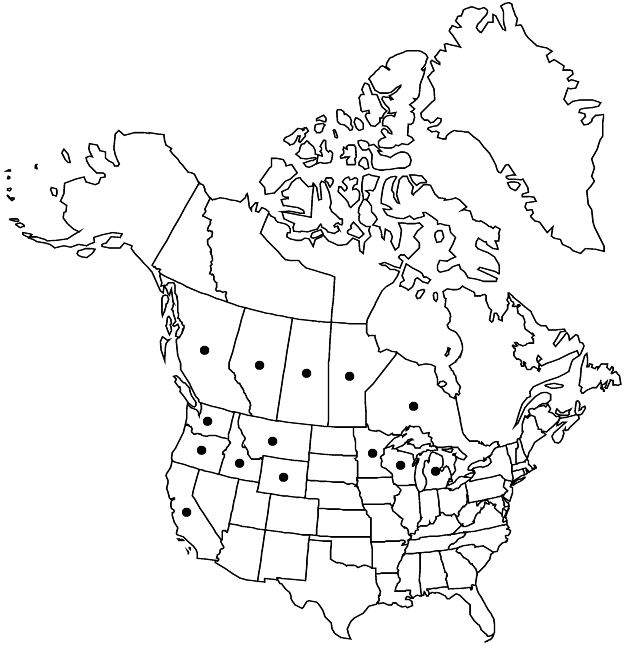Difference between revisions of "Potentilla gracilis var. flabelliformis"
in J. Torrey and A. Gray, Fl. N. Amer. 1: 440. 1840.
FNA>Volume Importer |
FNA>Volume Importer |
(No difference)
| |
Revision as of 20:36, 24 September 2019
Stems (3–)5–8(–10) dm. Basal leaves: petiole (7–)10–25(–30) cm, long hairs abundant, usually ± appressed, 0.5–2(–3) mm, stiff, crisped and cottony hairs usually absent, glands usually absent; leaflets 5–7, separate to overlapping, largest oblanceolate to obovate, (3.5–)5–9(–11) × 2–4 cm, margins revolute, ± whole length evenly or unevenly incised 3/4+ to midvein, undivided medial blade 3–6 mm wide, teeth 6–10 per side, often secondarily toothed, linear, (8–)10–20(–35) mm, surfaces strongly dissimilar, abaxial white, long hairs sparse to common (mostly on veins), cottony or crisped-cottony hairs dense, glands absent or obscured, adaxial usually dark green, sometimes grayish green, long hairs sparse to common (mostly on veins), crisped hairs absent or sparse, cottony hairs and glands usually absent. Flowers: epicalyx bractlets 4–8 × 0.8–2 mm; hypanthium 3.5–5.5 mm diam.; petals 5–10 × 5–12 mm; carpels 20–50, styles (1–)1.5–2 mm. Achenes 1.1–1.5 mm. 2n = 56–65.
Phenology: Flowering summer.
Habitat: Montane meadows in aspen and conifer woodlands, sagebrush communities, grasslands
Elevation: 200–2000 m
Distribution

Alta., B.C., Man., Ont., Sask., Calif., Idaho, Mich., Minn., Mont., Oreg., Wash., Wis., Wyo.
Discussion
Variety flabelliformis is relatively distinctive, perhaps on par with members of sect. Graciles treated here as species. Plants are relatively large, with deeply incised leaves that are notably bicolored with dense cottony hairs abaxially. There are two morphs with some geographic underpinning, possibly deserving taxonomic recognition. One morph, characteristic of the northern prairies and including the type, has simply pectinate leaves with a very narrow undivided medial blade and narrow teeth lacking secondary toothing. The second morph tends to have unevenly incised leaves with a wider undivided medial blade and teeth that are often tapering and secondarily toothed. This morph is centered in the montane valleys of the northern Rocky Mountains, extending as far south as Modoc County in northeastern California.
Collections of var. flabelliformis from eastern locations (Michigan, Minnesota, Wisconsin) are probably introductions, possibly of uncertain persistence. Historical reports from Alaska, Colorado, Nebraska, and Nevada are unconfirmed as this variety.
Although Potentilla flabelliformis var. ctenophora Rydberg [= P. gracilis var. ctenophora (Rydberg) B. Boivin] is commonly treated as a synonym of P. flabelliformis, P. A. Rydberg (1908d) had placed it in synonymy under P. blaschkeana (addressed here under var. gracilis). Rydberg (1897, 1898) did not designate a type or syntypes, so the proper disposition of var. ctenophora awaits lectotypification.
Selected References
None.